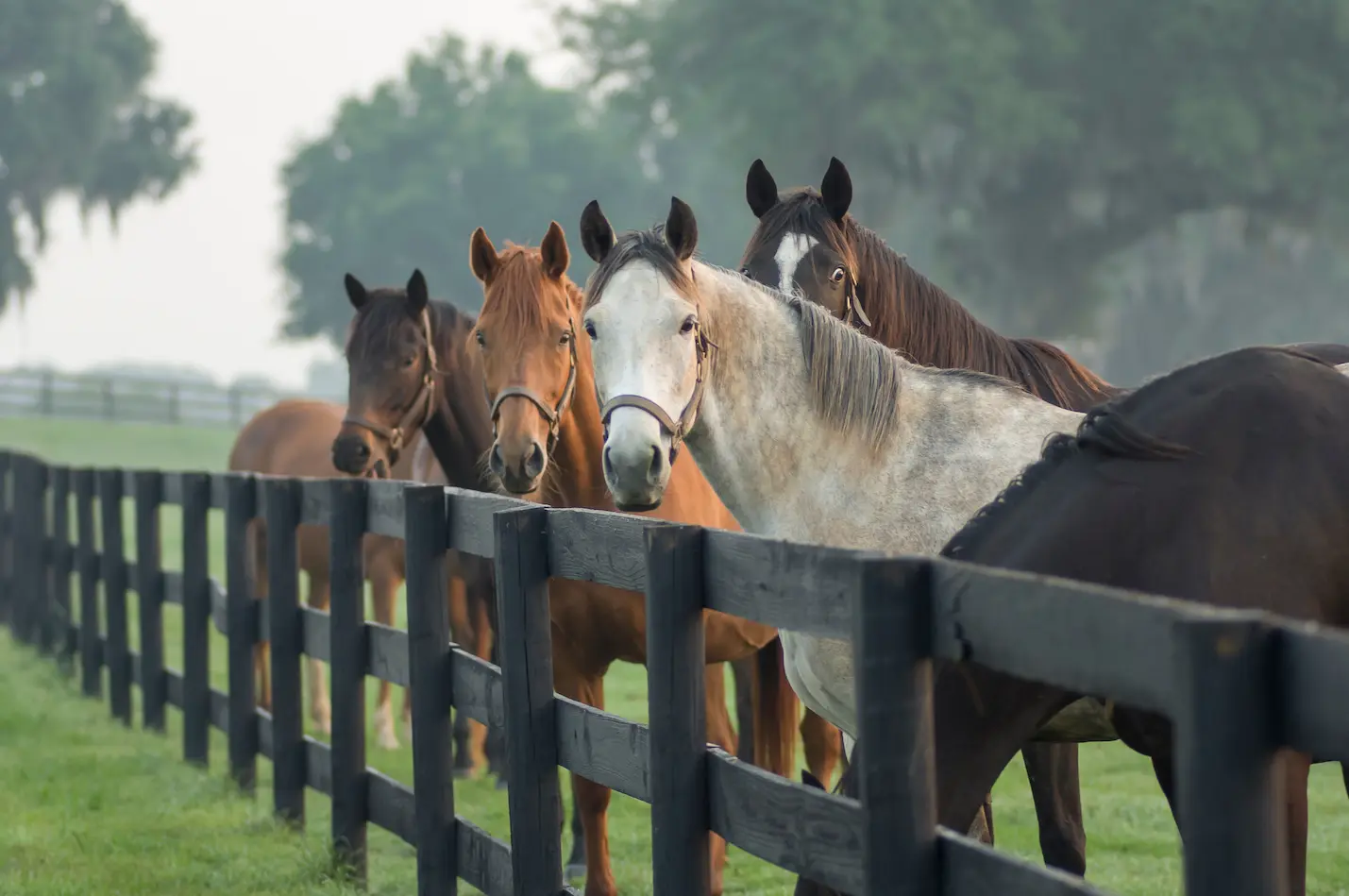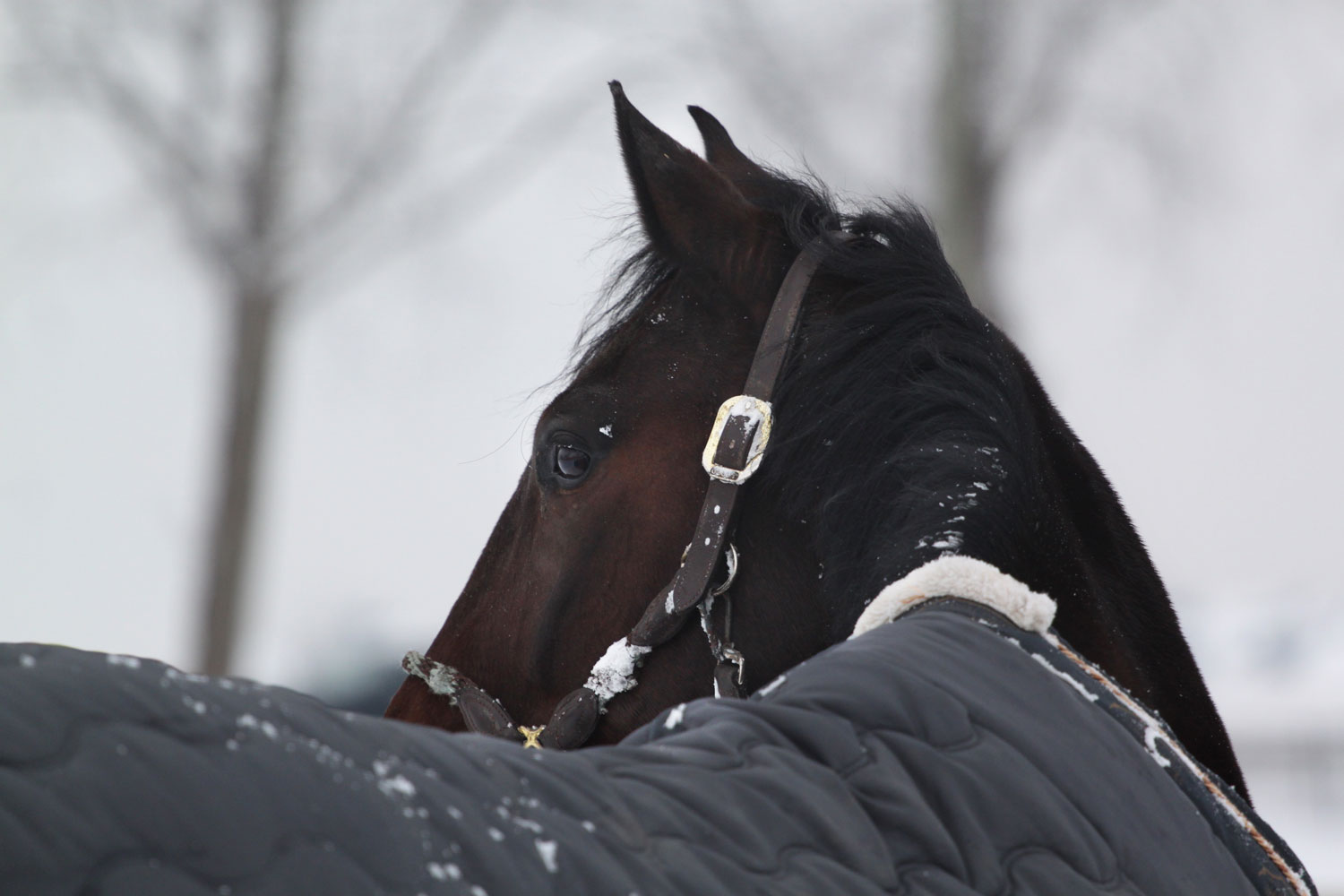A healthy gastrointestinal tract and balanced nutrition are foundational to overall wellness in horses. The digestive system impacts every aspect of equine health, including hoof health. However, modern performance horses often struggle with digestive issues that can lead to ongoing hoof problems.
Research suggests gastrointestinal disturbances in horses with metabolic disorders can contribute to laminitis, a debilitating condition characterized by inflammation in the hoof. Good nutrition that supports healthy digestion and metabolic function is essential for managing the disease. (Elliott et al., 2006)
By promoting optimal wellness with strategic management that supports a healthy digestive system, veterinarians can support hoof health and reduce laminitis risk. Keep reading to learn more about the links between digestion, nutrition, and laminitis.
Links Between Digestion and Laminitis
Malabsorption of nutrients and dysbiosis of the gut microbiota are the two main digestive factors that can contribute to laminitis. This condition is characterized by inflammation of the laminae tissue between the hoof and coffin bone. (Patterson-Kane et al, 2018)
Horses rely on nutrients absorbed from a balanced diet to provide the building blocks of strong hooves. As a result, gastrointestinal issues that prevent optimal nutrient absorption can lead to malnutrition of the hoof and weaken its structural integrity.
A balanced hindgut microbiota is vital for nutrient absorption. But the disruption of these populations of microbes can lead to the release of toxins into the bloodstream and systemic inflammation, which is associated with laminitis.
Malabsorption of Nutrients
Underlying gastrointestinal conditions can contribute to malnutrition of the hoof even if the client feeds a balanced diet. A healthy digestive tract enables the absorption of nutrients across the intestinal lining into the bloodstream, which delivers energy, water, protein, vitamins, and minerals to the hoof.
Inflammatory bowel diseases can hinder this process and compromise the structural integrity of the hoof. Conditions that cause pain while eating can also lead to malnutrition due to inadequate feed consumption. Common GI disorders associated with malnutrition and malabsorption of nutrients include enteritis, gastric ulcers, and colonic ulcers. (Mair et al., 2006)
Studies demonstrate that stress from travel and competition can increase the risk of stomach ulcers in performance horses, leading to inappetence. Meanwhile, colonic ulcers can arise from excessive use of non-steroidal anti-inflammatory drugs or improper diets. (Hartmann et al., 2003)
Disruption of the Microbiota
The equine gut microbiota aid digestion and protect against pathogens that enter the digestive tract. Horses depend on beneficial hindgut microbes to ferment fiber into volatile fatty acids, the primary energy source in the equine diet. (Dicks et al., 2014)
Large rations of high-energy feeds or fresh grass high in non-structural carbohydrates can overwhelm the horse’s ability to absorb starch in the small intestine and allow NSCs to reach the hindgut. Lactic acid bacteria quickly digest starch and outcompete beneficial microbes. This disruption to microbe populations significantly lowers pH, leading to hindgut acidosis. (Cipriano-Salazar et al., 2019)
Studies have identified significant differences in the microbiota of laminitic horses compared to healthy individuals. While laminitis is a multifactorial disorder, these results suggest a strong correlation between the gut microbiota and the condition. (Steelman et al., 2012)
Hindgut acidosis compromises the integrity of the digestive tract lining, allowing endotoxins from displaced bacteria to enter the bloodstream. These pathogenic substances are transported throughout the body, leading to a systemic inflammatory response. This response has devastating effects on the hoof. (Millinovich et al., 2010)
Inflammation in the hoof damages the hoof laminae, weakening the attachments of the hoof capsule to the coffin bone. These effects cause significant pain and can lead to the characteristic coffin bone rotation often seen in horses with laminitis.
How Good Nutrition Can Help
While balanced nutrition provides horses with the nutrients they need to grow strong hooves, appropriate feeding programs also help promote healthy digestive function. Plus, many horses at risk of developing laminitis have metabolic disorders that require careful nutritional management.
Feeding a forage-based diet and limiting starch intake is vital for promoting a healthy digestive system and managing laminitis risks. The equine digestive system evolved to thrive on constant roughage intake and get the majority of dietary energy from fiber fermented in the hindgut by a balanced microbiota.
However, full access to fresh pasture may not be appropriate for horses with an elevated risk of laminitis. Fresh grasses can contain high levels of non-structural carbohydrates, contributing to microbiota disruptions. Low-starch hay provided in a slow feeder is a safer option for these horses. (Cipriano-Salazar et al., 2019)
Horses also need essential amino acids, vitamins, and minerals from their diet to support hoof growth and integrity. The hoof wall is primarily composed of protein, so supplementing with amino acids can help ensure horses have the building blocks necessary for a strong hoof. Other nutrients that play a crucial role in hoof health include biotin, zinc, and copper.
Targeted support for digestive health can benefit equine patients with an increased risk of gastrointestinal problems. Practitioners should also consider additional digestive support for horses struggling with poor hoof health to ensure they can get the nutrients they need from their diet.
Nutritional ingredients that help support digestive function in horses with hoof health concerns include polar lipids and beta-glucan. Polar lipids help protect the intestinal lining, while beta glucan helps moderate the release of excess sugars associated with hoof problems.
SUCCEED Veterinary Formula contains the amino acids, polar lipids and beta-glucan that can help maintain proper digestive function and full-body wellness. This product builds on the original SUCCEED formula with additional premium ingredients and is only available through equine veterinarians. Encourage your clients to take a trusted, natural approach to support GI health and beyond.
References
- Elliott, J. et al. Gastrointestinal Derived Factors Are Potential Triggers for the Development of Acute Equine Laminitis. J Nutrition. 2006.
- Patterson-Kane, J. et al. Paradigm shifts in understanding equine laminitis. The Vet J. 2018.
- Mair, T. et al. Malabsorption syndromes in the horse. Equine Vet Ed. 2006.
- Hartmann, A. et al. A preliminary investigation into the association between competition and gastric ulcer formation in non-racing performance horses. J Equine Vet Sci. 2003.
- Dicks, L. et al. The equine gastro-intestinal tract: An overview of the microbiota, disease and treatment. Livestock Sci. 2014.
- Cipriano-Salazar, M. et al. The Dietary Components and Feeding Management as Options to Offset Digestive Disturbances in Horses. J Equine Vet Sci. 2019.
- Steelman, S. et al. Pyrosequencing of 16S rRNA genes in fecal samples reveals high diversity of hindgut microflora in horses and potential links to chronic laminitis. BMC Vet Res. 2012.
- Millinovich, G. et al. Microbial Events in the Hindgut During Carbohydrate-induced Equine Laminitis. Vet Clin Equine Pract. 2010.



